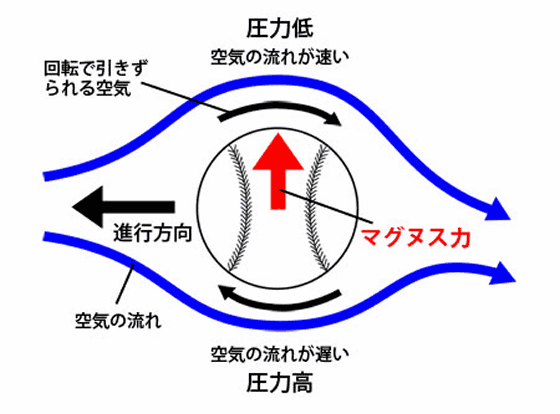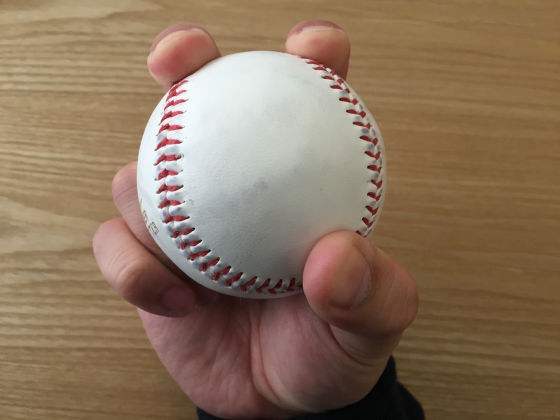It turns out that there is no aerodynamic difference in the fastball's twin and four seams, so what is changing the sphere?

Baseball 's fastball (fastball) can be roughly divided into two types, "Four Seam" and "Tsushima" from the way the fingers hit the seams (seams) of the ball, each of which has a different trajectory. Traditionally, the difference between these stems has been thought to be born due to the difference in the number of seams passing each time the ball makes one revolution, but research presentation that there is another factor is being made.
Explaining a fastball's unexpected twist | EurekAlert! Science News
https://www.eurekalert.org/pub_releases/2018-11/aps-eaf111318.php
Physics can explain the fastball's unexpected twist, new study finds | Ars Technica
https://arstechnica.com/science/2018/11/physics-can-explain-the-fastballs-unexpected-twist-new-study-finds/
When the sphere moves through the air while rotating, a pressure change occurs around the rotating ball. When an upward rotation (backspin) is applied to the traveling direction, a pressure difference occurs between the upper and lower sides of the ball, lifting the ball from the bottom upward, a force (lift) occurs in the direction opposite to gravity, and the physical phenomenon Is known as " Magnus effect ".

When a backspinned fastball is subjected to lift force, baseball balls with seams expressed as "8 characters" can be roughly divided into two different patterns depending on the direction of rotation. The fast ball which throws with a grip that has long been known as "straight (fastball)" in Japan is called "Four seam" because the seam passes four times each time the ball makes one revolution. On the other hand, the fast ball which is conventionally thrown with a grip which has been regarded as a "shoot" system is called "tsuamu" because the seam will pass twice each time the ball makes one revolution, Is distinguished.

The influence of the seam which protruded from the ball surface is large as a factor which causes the pressure difference between the balls above and below is greater, so the Four Seam gains a greater lift than "Tsuushima" and it becomes "straight with elongation" It is said that there is a feature that it changes slightly though it lacks growth rather than Four Seam. It is America's research that was announced this time to negate this theory and give another factor.
Mr. Barton Smith, who studies mechanical engineering and aerospace engineering at Utah State University in the United States, is a fanatical baseball fan and he aerodynamically examined the difference between Faucheim and Tsushima. Mr. Smith created a pitching machine that can separate the four seams and the tweems, threw the ball in the smoke-free space, and photographed the smoke particles at intervals of 20 microseconds. By using a technique called "particle image velocimetry" which compares the state of smoke which changes with a slight time interval, the direction of rotation and rotation speed of the air vortex generated around the ball is calculated , "Boundary layer separation" was calculated by specifying the part where the air layer surrounding the ball separates and produces a flow.

As a result, it seems that in the case of Faucyme and Tsushima, it turned out that the aerodynamic effect generated in the whole ball is almost the same, although the place where the boundary layer separation occurs differs depending on the rotation of the ball. In other words, it does not mean that the difference of the stems is caused by the difference in the number of times the seam crosses depending on the direction of rotation.
So what is the difference between the Four Seam and the Tsushiru 's trajectory is said to be "the inclination of the axis of rotation of the ball". The tilt angle seems to have a larger inclination of the rotation axis than the Four Seams, which is thought to change the trajectory. As for the reason why the tilt of the rotation axis of the torsion tends to be large, Mr. Smith seems to think that it may be caused by one finger separating from the seam at the time of release.

Related Posts:
in Science, Posted by darkhorse_log







